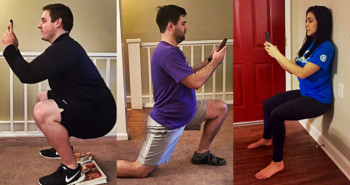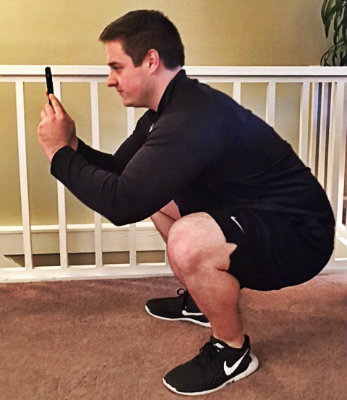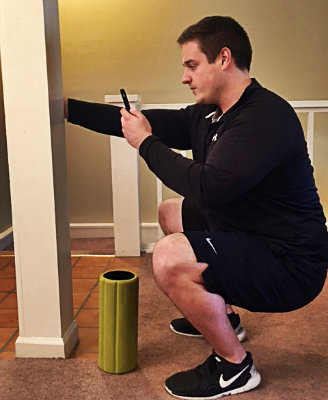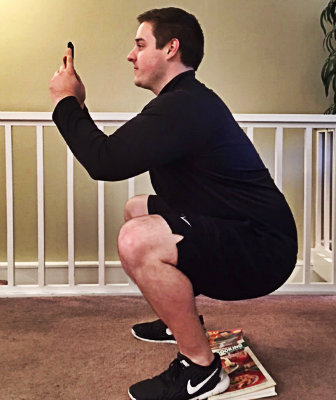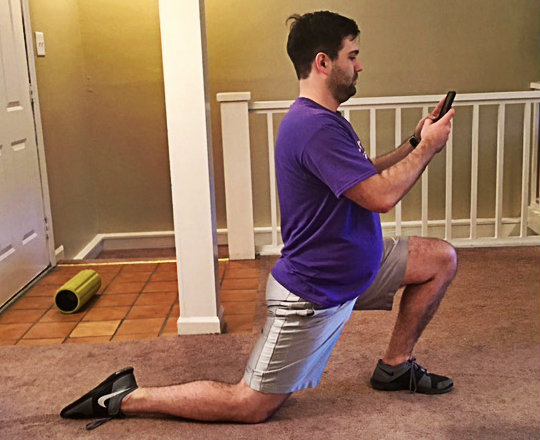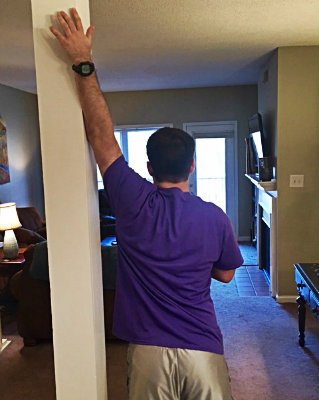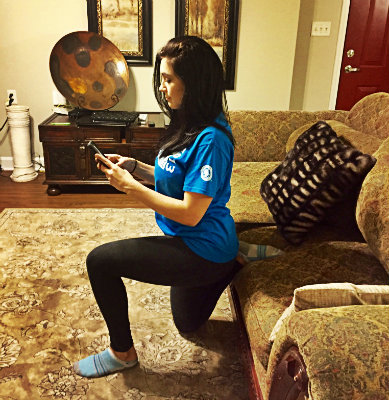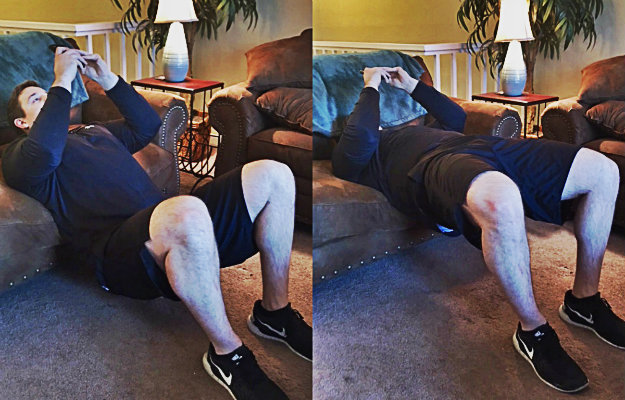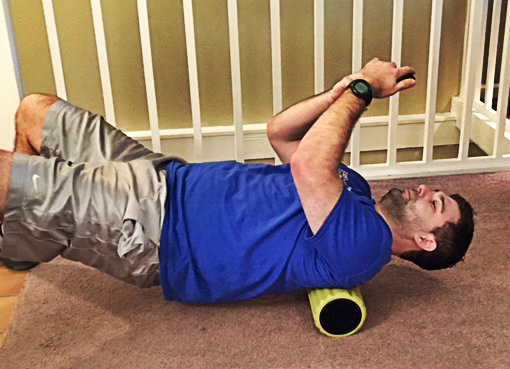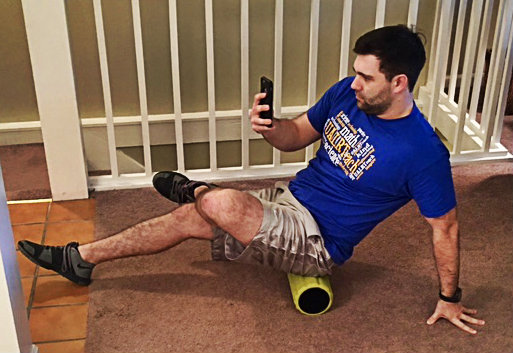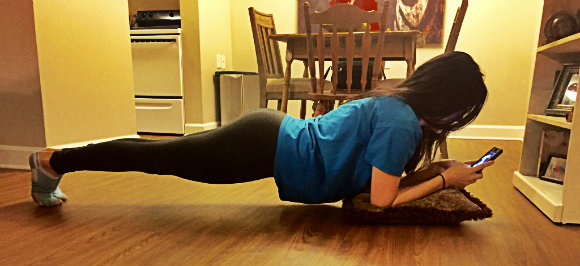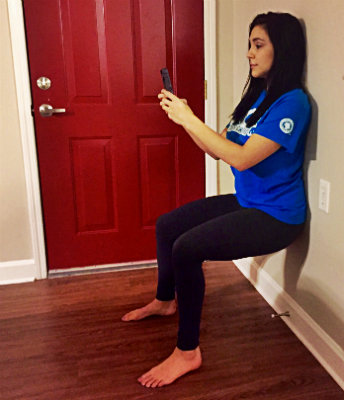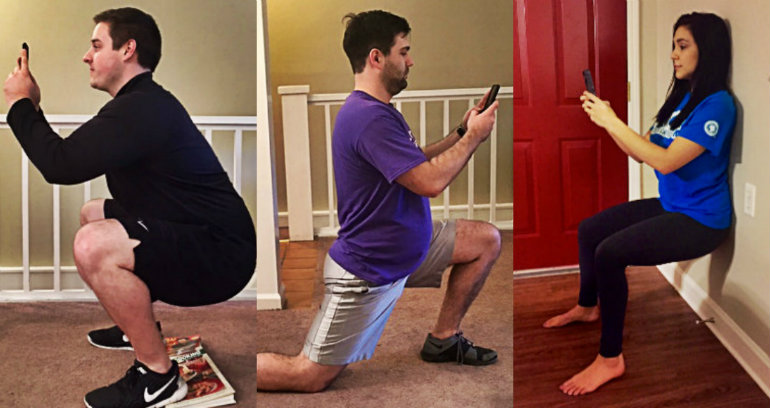 Reading Time: 7 minutes
Reading Time: 7 minutesGive me social media or give me death. Unfortunately, our social media and mobile tendencies are potentially harmful to our health.
For starters, think about the position you normally assume when browsing social media. There’s a good chance your neck is angled down and your shoulders are rounded forward. You are likely slouched in this position for extended periods of time. This positioning would be great if we didn’t have that pesky tower of vertebrate keeping us upright.
Alas, we do have a spine, and the correlation between our “text-neck” positioning and the epidemic of lower back pain, poor posture, and inability to move properly is a strong one. What’s more, the sedentary nature of social media surfing combined with the movement dysfunction from poor posture could be a major contributor to obesity.
But my love for social media is strong, and I’m going to continue using it in spite of its potential perils. I have a feeling we’re on the same page, so I put together a list of exercises and stretches we can incorporate while looking at pictures of our friends’ food.
You’re excited, I know, but keep a few things in mind as you read through the exercises:
- Pay attention to your neck position. Fight the urge to assume text-neck position in the bottom of a squat. See if you can find all the subpar neck positions in the photos below.
- Don’t get so wrapped up in the latest recipe video that you forget to breathe during a plank.
- We’re trying to loosen up hips, hamstrings, shoulders, and upper back for better posture, mobility, and flexibility – not become world-class athletes. Do not incorporate a cell phone into your regular training routine.
Alright, so let’s commence with the food porn and cat videos – I mean, integrating exercise and mobility drills into our daily life.
Squat Hold
Simple enough – hang out in the bottom of a squat while you surf. This move will loosen up your tight hips and improve your squat depth and thoracic mobility (your ability to keep your chest up).
The most common issue with this exercise is that it’s pretty tough to sit in the bottom of a squat for very long. As you can see in this photo, I’m leaned forward to compensate for my subpar mobility. This isn’t a huge issue while working on mobility, but you certainly wouldn’t want to add weight to a squat with this position. Let’s look at a few regressions and pay special attention to my torso position as the movement becomes easier.
Assisted Squat Hold
Holding on to a post or door frame will allow you to set back on to your heels without toppling over backwards. Be sure to push your hips and knees forward in the bottom position so you feel a good stretch in your ankles and hips.
Heels Elevated Squat Hold
Once you have graduated from the assisted squat hold, try elevating your heels an inch or two. I’m using books in the photo below but any one- or two-inch surface will work. This trick will allow you to work around ankle mobility issues to reach a greater depth while keeping your torso up. If you notice your torso position improve greatly, like in my examples from the first squat hold compared to the example below, it’s a good sign your ankle mobility is a limiting factor in your squat.
Hamstring Door Frame Stretch
Position your body perpendicular to a door frame or wall so one leg remains flat on the ground. Place the leg closest to the wall in a position where the hamstrings are stretched. Be sure to keep your other leg flat on the ground throughout the stretch. After 30-60 seconds, rotate legs by moving to the other side of your door or turning your body the other direction. Cycle back and forth between legs for 5-10 minutes, each time moving your body farther in the doorway to get a better stretch as your hamstrings loosen.
Hip Flexor Stretch
Assume a lunge position with your back foot relaxed, toes to the ground. While maintaining an upright torso, lean forward while simultaneously flexing the glute musculature of your back leg. You should feel a strong stretch in the hip flexor and quadriceps (front of leg) of your back leg.
Door Frame Walk Through
Starting position for this stretch will largely depend on individual shoulder mobility and range of motion. To begin, position yourself beside a door frame or wall with your arm overhead and hand placed on the wall beside you. Slowly walk your way forward, maintaining overhead extension, until you feel a stretch in your shoulder, chest, and upper back.
Rear Foot Elevated Quad/Hip Flexor Stretch
Place one knee on the ground as close to a couch or chair as possible (use a pillow for padding if needed) while elevating your rear foot behind you. The cool thing about this stretch is you can easily switch back and forth between stretching your quadriceps and hip flexors by tilting either forward or backward. That said, avoid rocking back forth and be sure to keep your chest upright and your text neck in check.
Hip Thrust Hold
Position yourself on a couch or chair with your shoulder blades and upper back on the edge of the surface. With your heels underneath you, use your glutes by pushing through the heels to elevate your body until it’s parallel with the floor. Squeeze the glutes as hard as you can and maintain this parallel position for as long as possible while surfing.
Foam Roller – Upper Back
Roll your upper back until you find your knots, adhesions, and tender spots. Hang out on each area for 30-60 seconds before moving on to the next. Deep breathing will help open up your thoracic spine allowing you to stand taller with better posture.
Foam Roller – Glutes
Using the same technique as the upper back, be sure to maintain proper neck position to avoid text neck. (Guilty in the picture below.)
Plank
Studies show the plank activates as many core muscles as nearly every other core exercise. Not to mention, a plank is most likely the safest core exercise due to the lack of lumbar spinal flexion or extension like in a crunch. So, planks are great and extremely effective at building the abdominal muscles, but they sure were boring – until now. Focus on maintaining a neutral spine and breathing in the midst of your surf session.
Wall Sit
Similar to the plank, the wall sit is another super effective exercise that gets ignored due to its vanilla-ness. When performing a wall sit, keep in mind you’re not doing a squat hold. The tension should be on the muscles, not your joints. Maintain vertical shins (notice the ninety-degree angle between shins and thighs in the photo below), an upright torso, and proper neck position. These will ensure you’re not doing a back-supported squat hold.
That’s it for this edition of mobile mobility. Go forth and browse. In all seriousness, you have a handful of exercises to get started with, but we would love to see your own mobile browsing exercises. Tag us in your creative exercises on Instagram at @wholelifechallenge and Facebook at Whole Life Challenge.
